Tasmania, an island state off Australia’s southern coast, remains one of the most rugged, untouched pockets of paradise. Often overlooked by mainland Australia, it offers a wild side like you’ve never seen—bushwalks, wine, and wallabies included—and a whole new meaning to slow travel. Trafalgar, a guided vacation company, launched Tasmania’s Footsteps and Trails, a weeklong journey from Launceston down to charming, historic Hobart—including a multi-day hike in the picturesque Bay of Fires with Aboriginal Tasmanians, through the bush and along the jaw-dropping coast. (It should be noted that this tour no longer exists.)
I set out on the journey jet lagged from the overseas travel. Night one consisted of an early stroll along the Launceston seaport pier and an overnight’s sleep in Peppers Silo Launceston—silo mills from the 1960s-turned five star boutique hotel. Early the next morning, still discombobulated but excited, I met up with the other travelers to embark on the rest of the journey—starting with a 3-day hike in and around the Bay of Fires, named by Captain Tobias Furneaux in 1773, who saw fires on the beach from the Aboriginal people. Our backpacks were packed with necessities only, and we strapped snake gaiters to our shins, lathered up in sunscreen, and set out to hike up and over Mt. William to get to our campsite (called krakani lumi) by sunset. Djuka and Carleeta, two Aboriginal Tasmanian guides, led the way.
Organized by the Aboriginal Land Council of Tasmania, Wukalina Walk (the hike) is a definite highlight. It is a way to give our travelers first-hand connections to new cultures and ways of life that allow them to see life from another perspective, all while doing so responsibly.
We reached the kraki lumi just before sunset. Designed by Taylor + Hinds Architect, in conjunction with the Aboriginal Land Council of Tasmania, the half-dome structure, built with locally-sourced timber, served as a gathering place—equipped with a communal table, composting toilets, rain showers, and a firepit. Minimalistic sleeping huts resemble the original dwellings of the indigenous Palawa people and blend in with nature.
We were greeted by Danny at the campfire with a ceremonial cleansing ritual—offering positive energy to heal our minds, bodies, and spirits. That evening, we gathered around the fire, sweaty and exhausted, and feasted on fresh barbecued scallops, kangaroo, and muttonbird—a fishy, oily bird that eats krill, a true delicacy in these parts. Over several glasses of Tasmanian wine, stories were shared each evening until we retired to the sleeping huts.
The journey is spiritual and also haunting. We learn that by the late 18th century, the majority of Palawa (Tasmanian Aboriginal people) had been deprived of their land, lives, and traditions as a result of the British invasion in 1803. Tasmania’s Black War (1824-1831) between the British colonists and Aboriginal Australians in Tasmania is often described as an act of genocide by historians. The hike involves a glimpse into lost culture with Indigenous guides and authentic storytelling throughout the entire journey.
The second night, I scribbled a note in my travel journal at twilight: “Take what you need and leave the rest behind for others.” Danny stated this earlier in the day as we scoped out a midden site where Aboriginal people hunted, gathered, and ate along the coast—and now serve as archaeological sites filled with shells, bone, ash, and more. Middens are a footprint of the Aboriginal footprint; tread lightly, we’re told. Observation was a key, too, on this journey. Listen. Observe. Learn. Respect.
Definite perks are no cell service and utilizing the internal alarm clock. Waking up naturally and adventuring on the beach, a stone’s throw from camp, is a morning ritual that is hard to capture in words. Marsupials, snakes, birds, and sea creatures are around at all times. The last day of the Wukalina Walk is along the Bay of Fires, one of the country’s most stunning natural wonders, climbing over granite blocks colored bright orange by lichens along the way.
After a scenic drive through kangaroo country, a seaside lunch at the Lobster Shack, and coastline views, an eco-stay at the picturesque Edge of the Bay Resort in Freycinet National Park awaits. Floor-to-ceiling sliding glass doors open up to the pink granite peaks of the Hazards Mountains and Coles Bay—and the deck serves as a solid sunset cocktail hour and marsupial viewpoint as wallabies and kangaroos roam freely. In the morning, I hike up to the lookout point of Wineglass Bay and take advantage of one of the most stunning panoramic views.
Tasmania’s east coast wine trail offers a glimpse into one of Australia’s best-kept secrets. The island state represents less than 1% of Australia’s vineyards and exports only 0.1% of its wine, making it a real treat to partake. At Moorilla Estate (meaning “rock by the water” in Aboriginal dialect), I learn that Tasmania is parallel to the Rhône Valley in France—and Shiraz, known as Syrah, is trending in terms of popular wines. Riesling, a “dark horse,” should not be overlooked, especially the sparkling version, which makes for an excellent picnic wine. Moorilla’s owner, David Walsh, is also the creator of adjoining MONA (Museum of Old and New Art)—best described as a quirky adult Disneyland, especially after a few glasses of wine. The Mona Rona ferry was a solid good time to the last stop: Hobart, the capital of Tasmania, where the majority of the island’s population resides.
On the last full day, I cruised around Bruny Island, one of Tasmania’s southernmost islands (close to Antarctica), in search of fairy penguins, fur seals, and white wallabies. No penguins or wallabies, but the seals and dolphins put on a show—as did the towering cliffs and mysterious sea caves. After a proper fish and chips lunch, I climbed a few hundred stairs to Truganini Lookout to see the narrow strip of land connecting north and south Bruny Island—which is breathtaking.
Back in Hobart, I feasted on Bruny Island oysters, a local cheese plate, and slow-cooked Cape Grim beef short ribs and sipped lots of Tasmanian wine at Old Wharf Restaurant. Later that evening, as I packed up my weathered hiking clothes and rolled into a cozy bed at MACq 01 Hotel, a boutique hotel on the waterfront. I still smelled the campfire scent on my hair—a gentle reminder of how simple life is.
*Traveling back to Tasmania, January 2020, pre-COVID times; this feature originally appeared in Departures magazine in September 2020 and no longer exists online. I thought it was important to resurrect it.



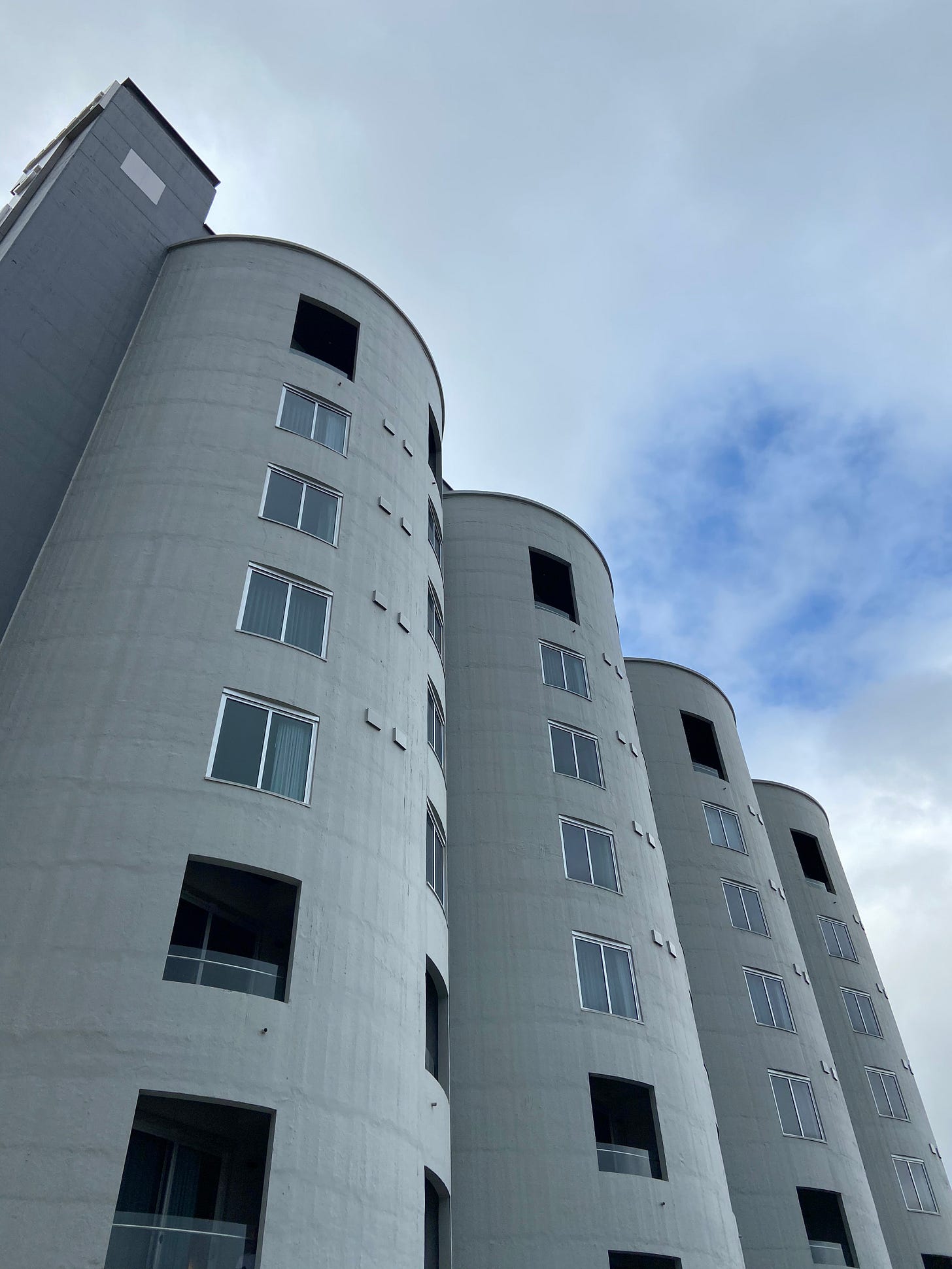
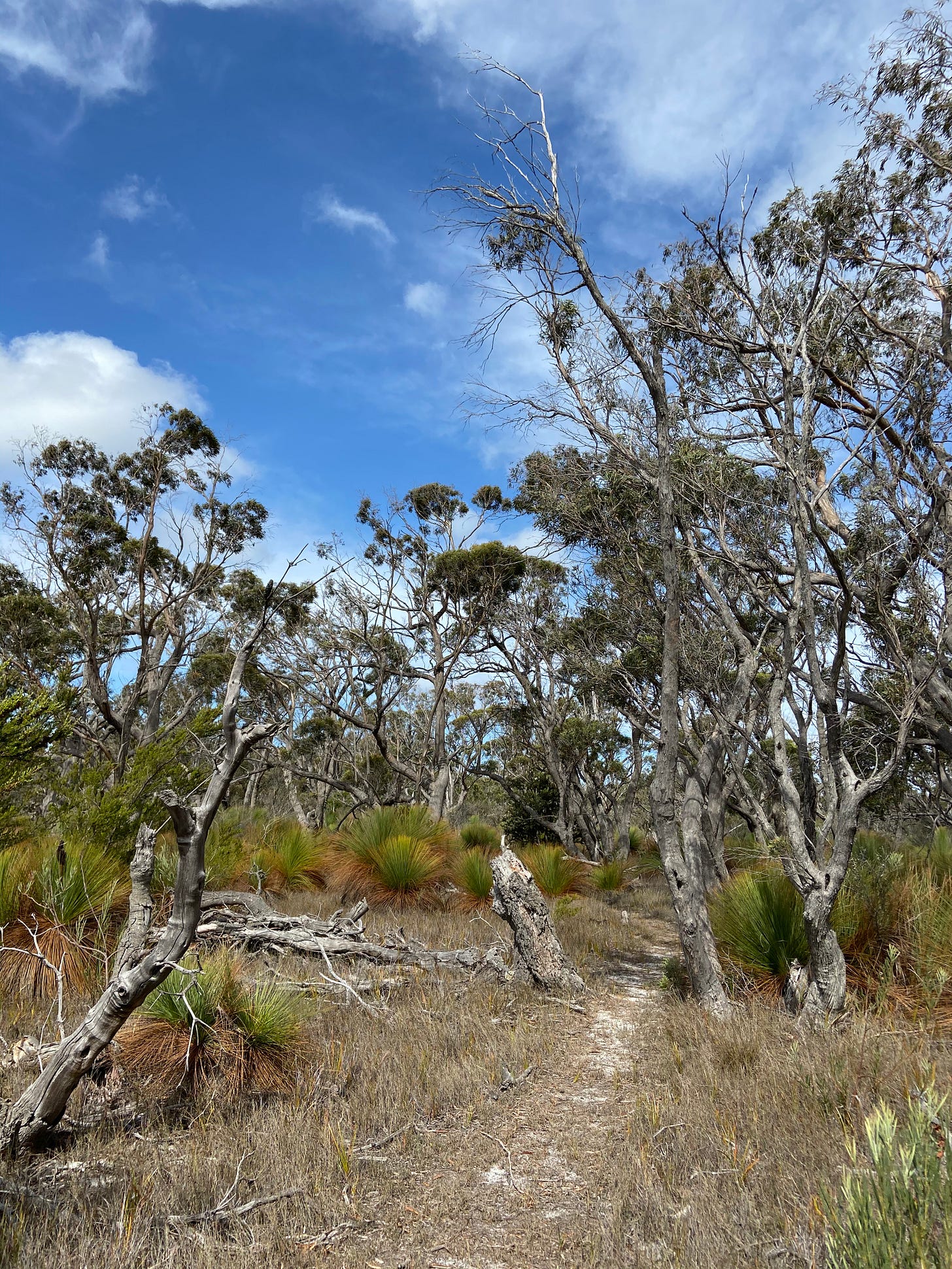

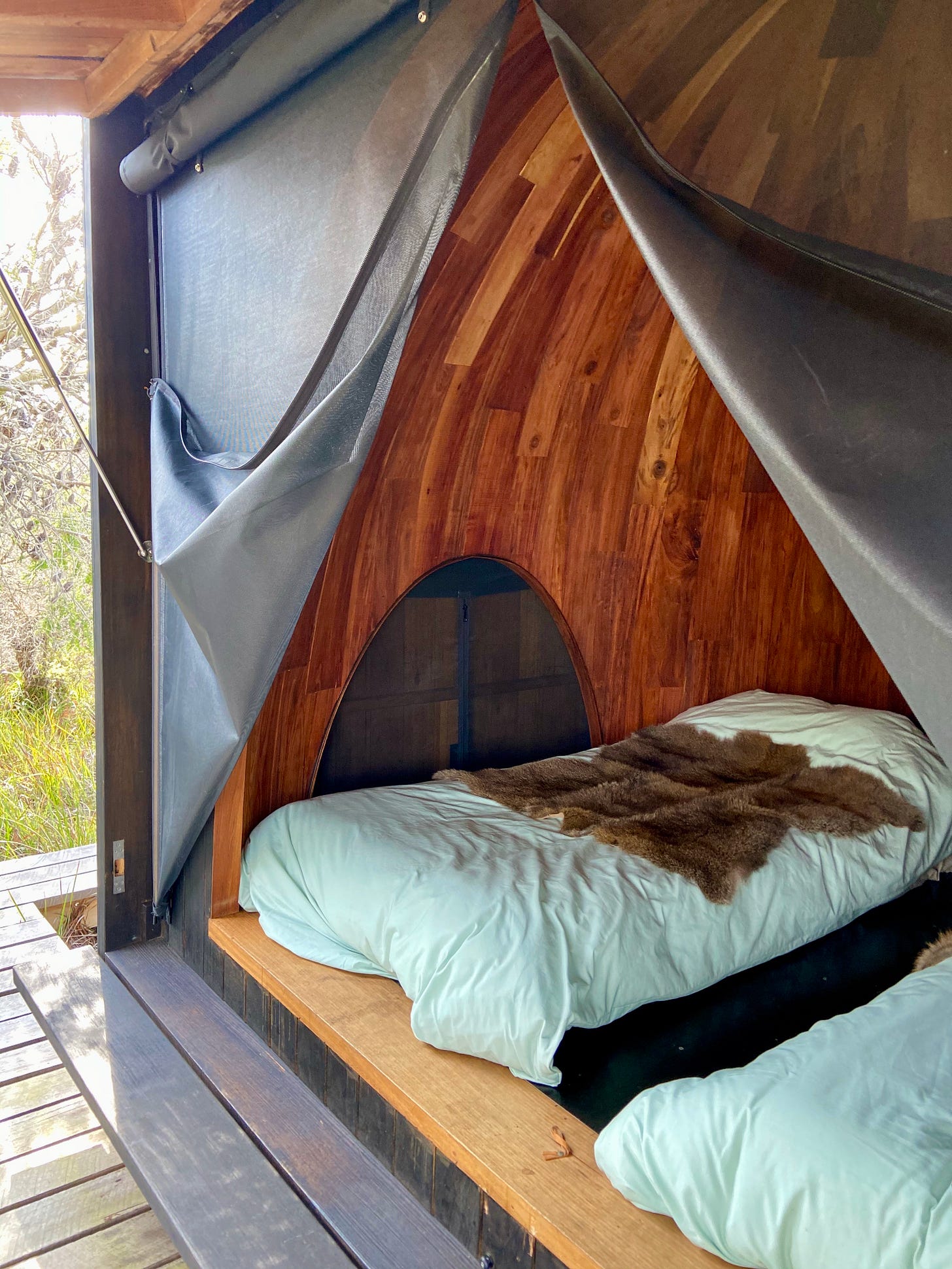
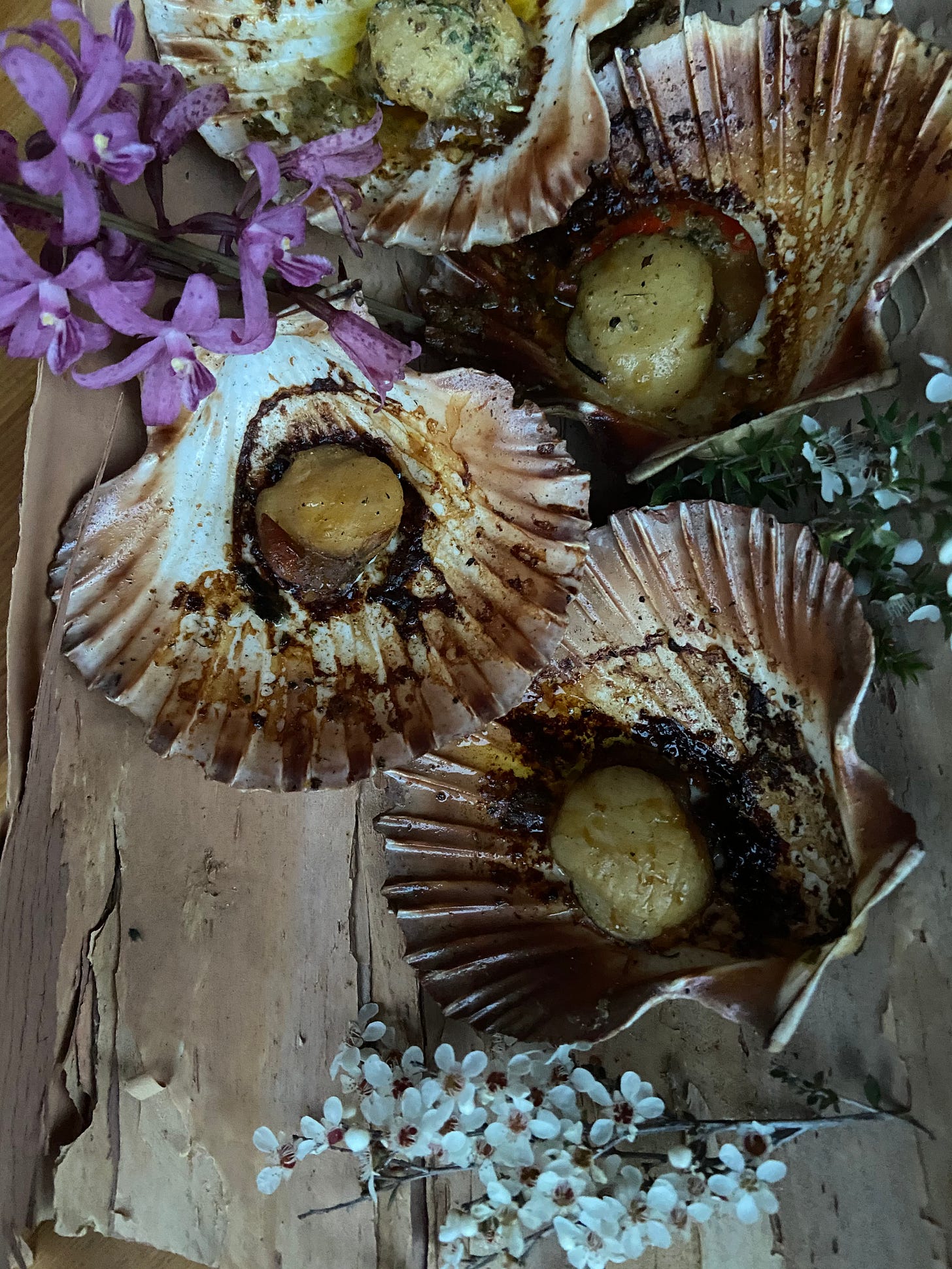
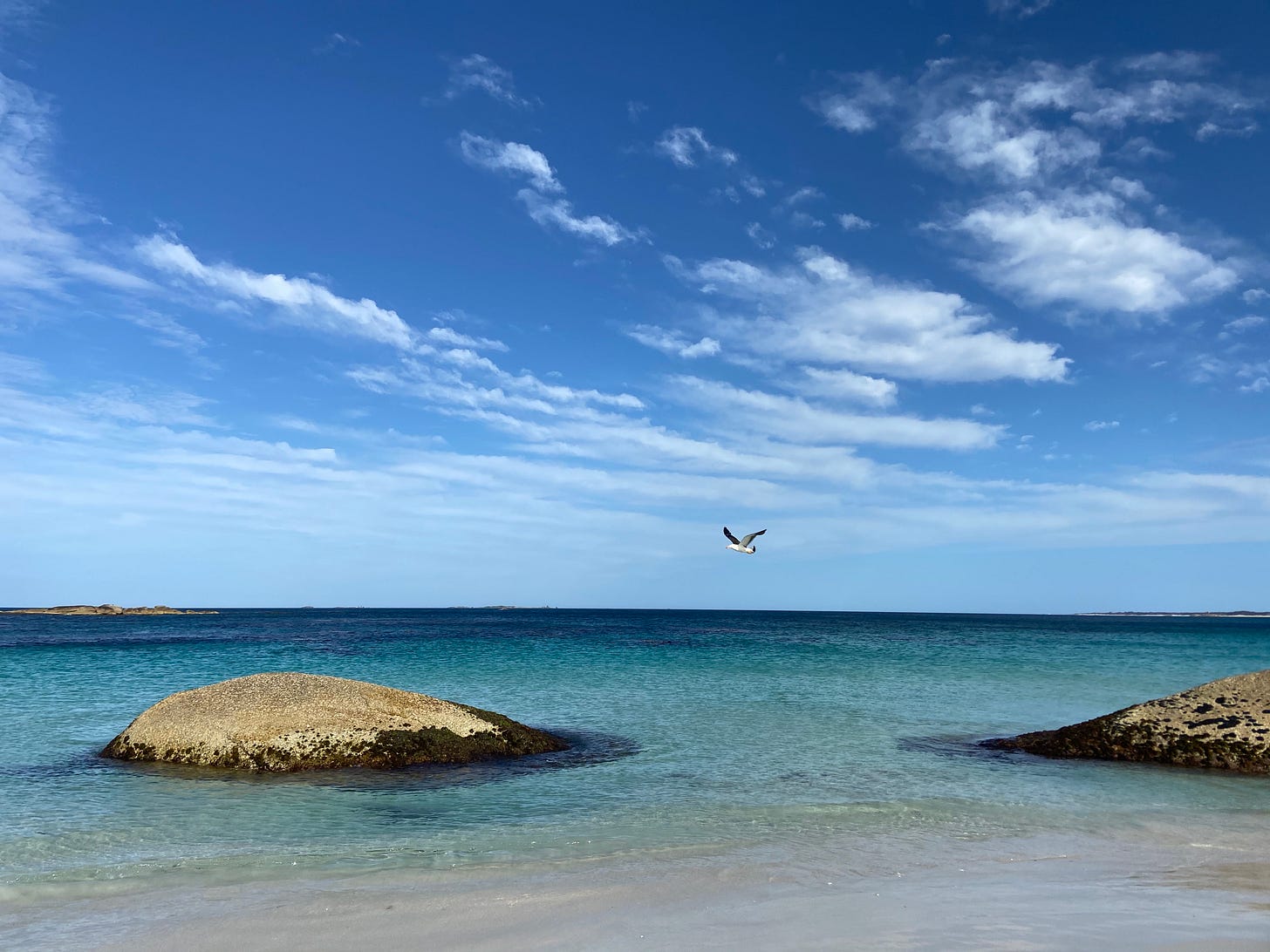
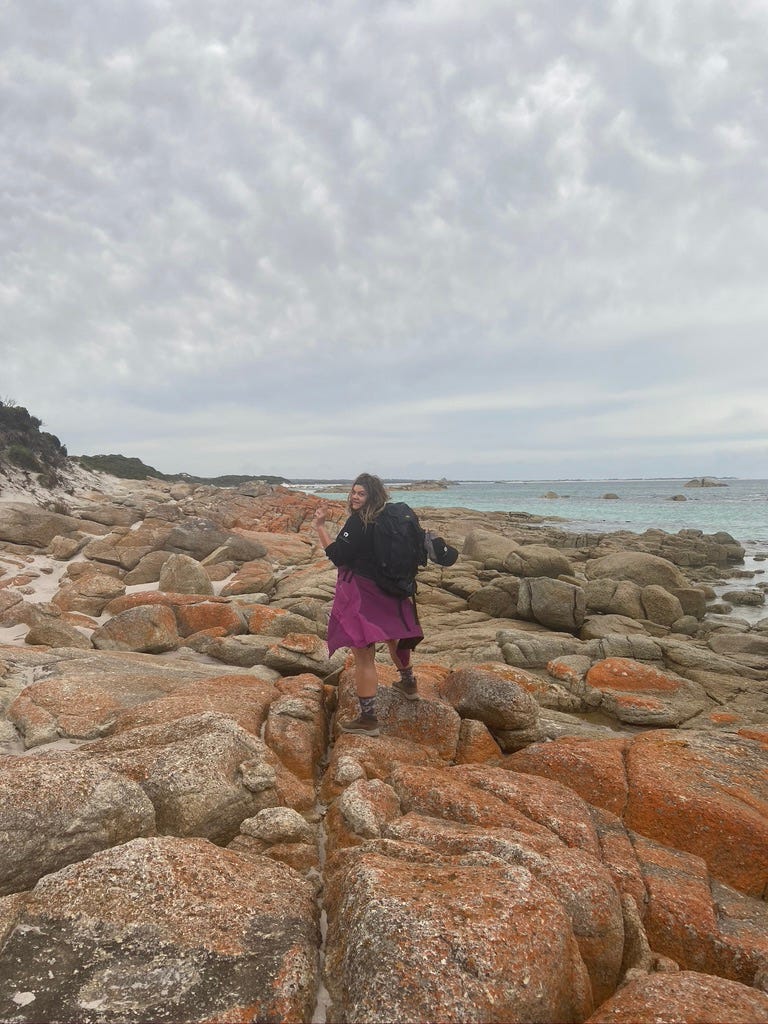
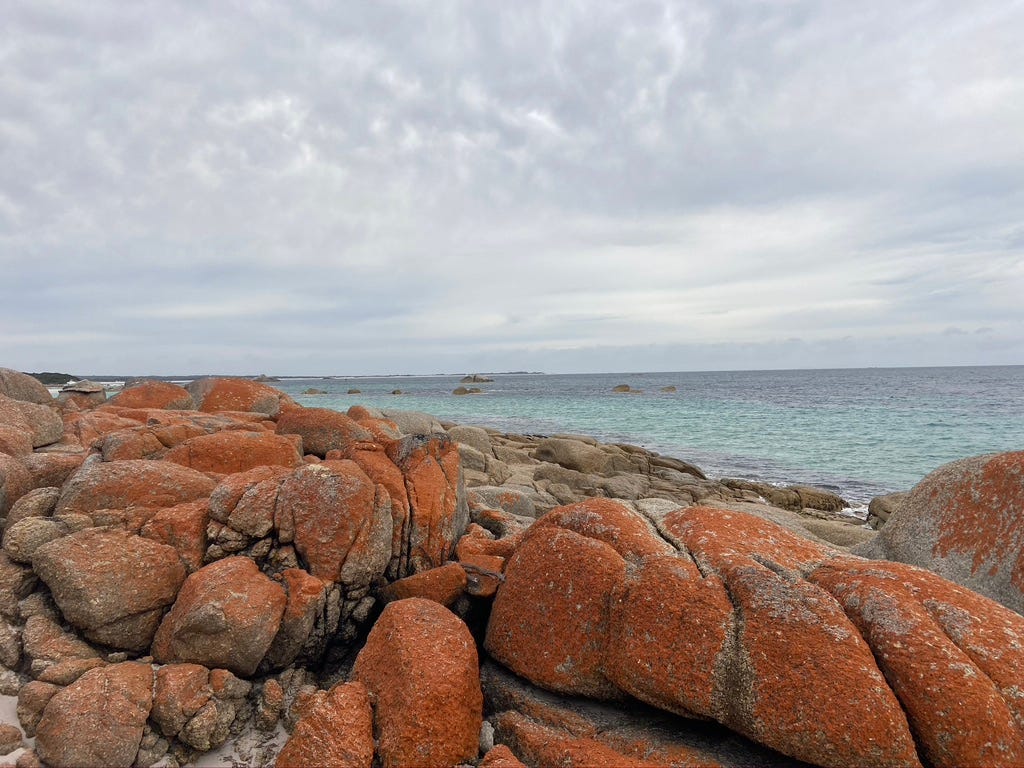
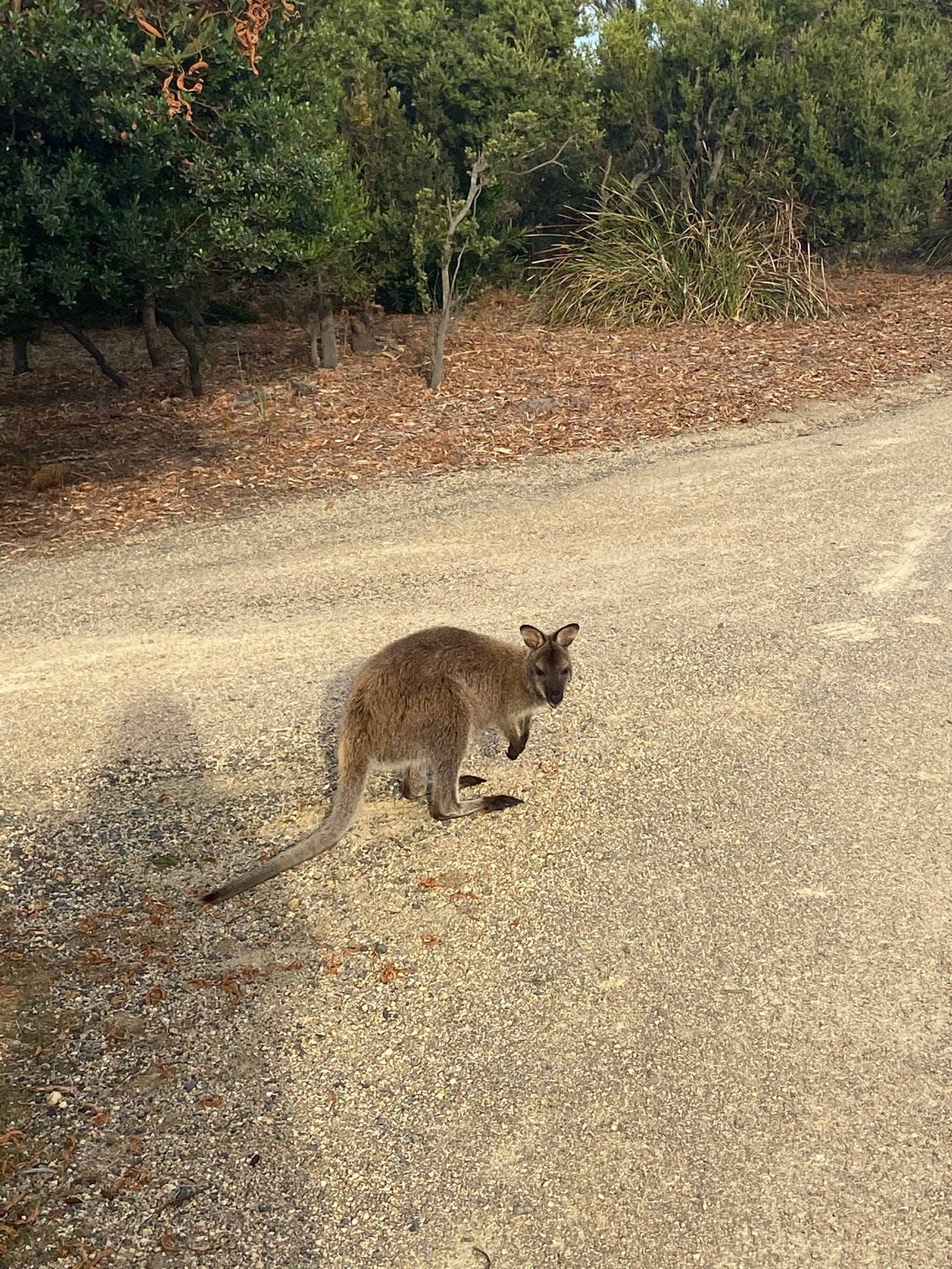
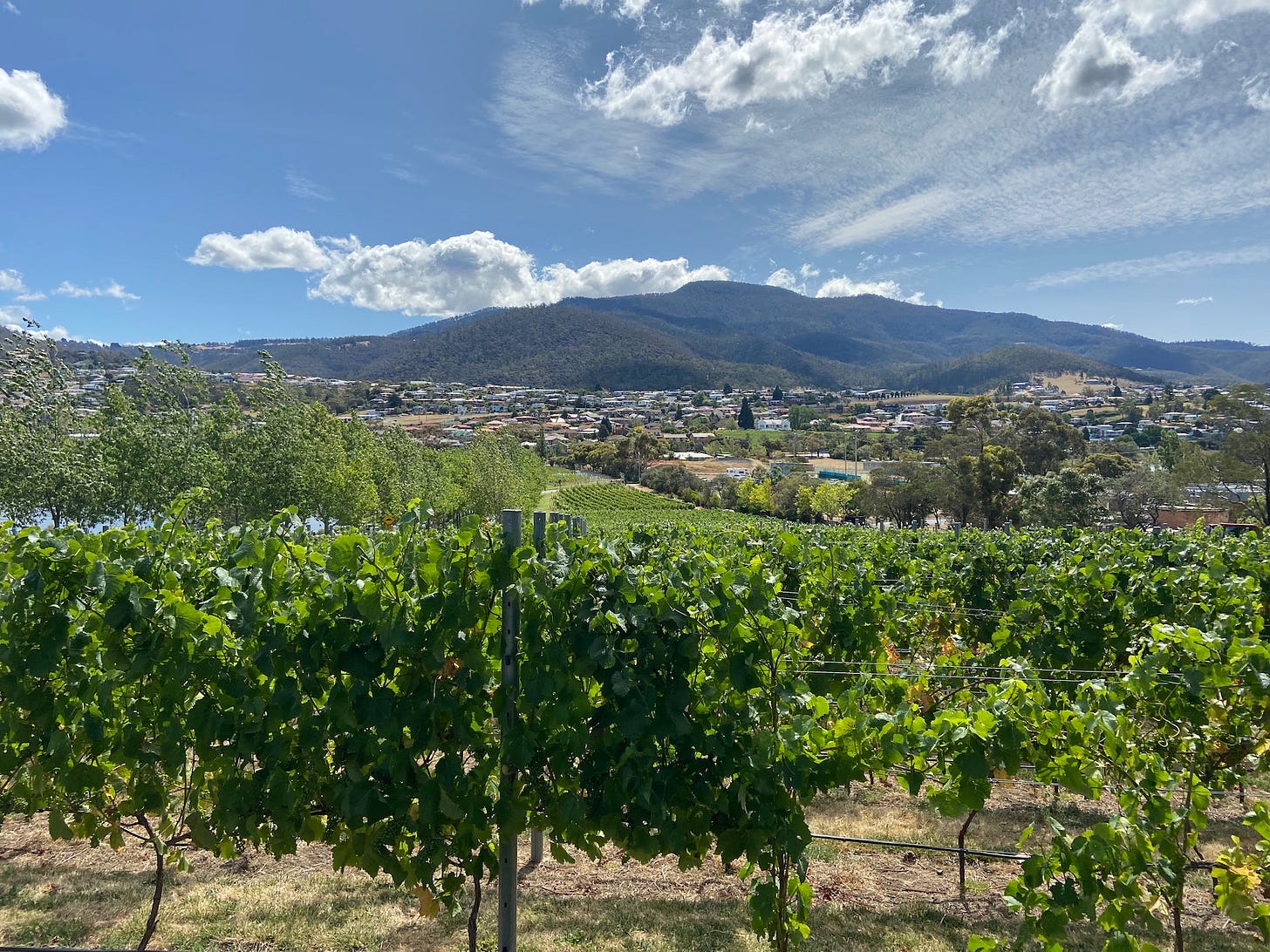
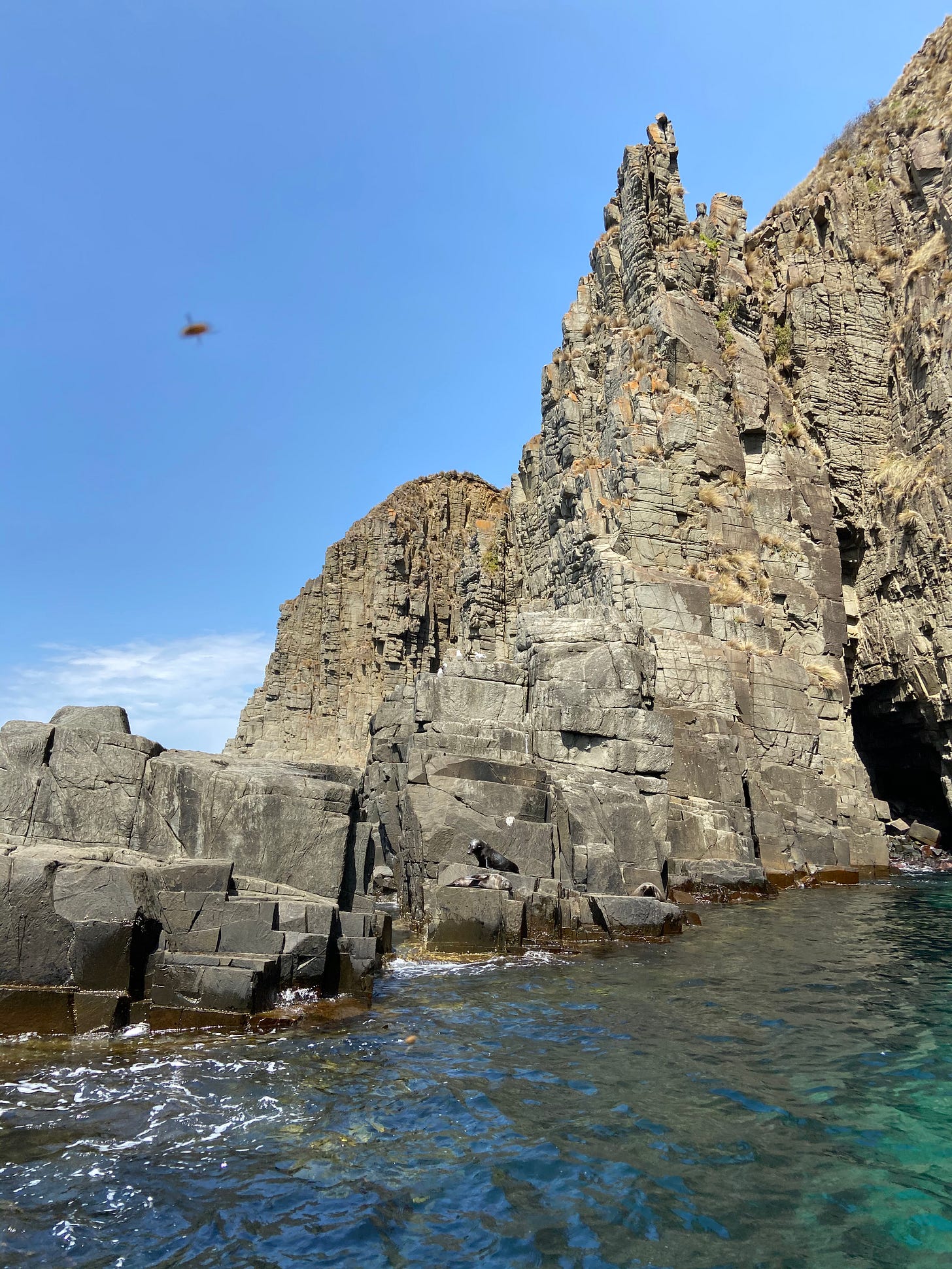
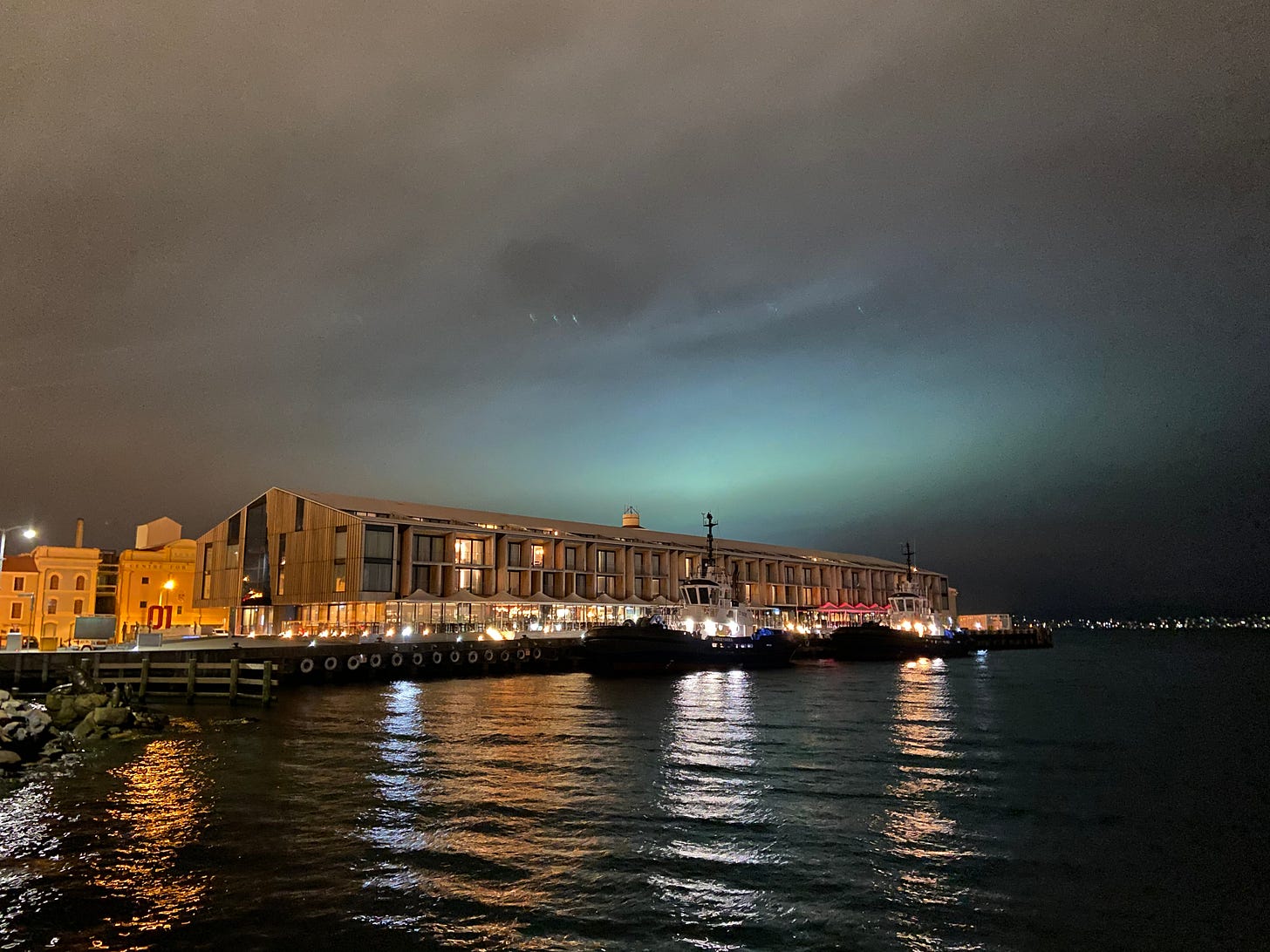
I had a friend in my early teaching days whose wife was from there. They traveled to Tasmania every summer and they loved it! It’s on my bucket list!
The water looks so beautiful!